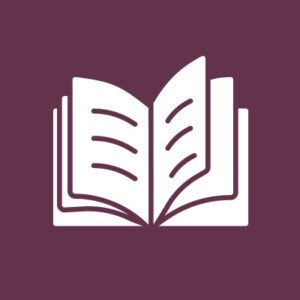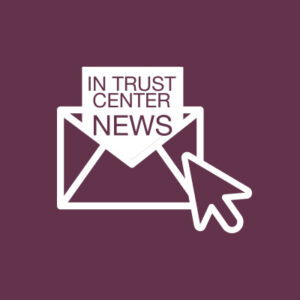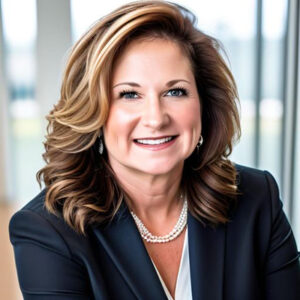Dr. Mary Hess, an expert on distributed learning in theological education, spoke with the In Trust Center’s Matt Hufman for the summer magazine. You can find that piece here. This is an extended version of the conversation that adds insight to what faculty administrators, and boards can consider to further develop education practices.
One of the things the magazine Q&A brings up is the issue of context – people are in their living rooms worshipping instead of a church. The pandemic has brought more difficulty in terms of doing ministry.
That’s one reason why seminary education has to be about formation of pastoral leaders who can learn where their own resilience and resources lie. This is something I wish boards would pay more attention to. There’s probably 5 percent of students for whom reading systematic theology does that, but there’s a whole bunch of other students for whom that isn’t what does it. How do you walk alongside them to help them find their own inner landscape, help them figure out how they can speak to the needs of the community and how they keep themselves resourced in the middle of it?
Can you have formational moments online?
It absolutely can happen in digitally mediated spaces, but you have to be intentional about it. Thirty years ago when I first started doing this work, I would talk to theological faculties about teaching online, and they would say to me, “You cannot teach theology online because theology is a deeply embodied discourse and the online space is deeply disembodied.” To which I would respond. “I’ve been in a lot of theological classrooms that are deeply disembodied to me as a woman. And I’ve been in a lot of discussions online that are deeply embodied.”
The issue is not: Is it this or that? The question is: How do you do it? This is where context comes in again. One of the things that I do at the beginning when we’re in thoroughly online spaces is invite students to bring photographs of their space, to talk to us about who is learning with them, who are they learning on behalf of, and what’s their community? And photographs and music can communicate that oftentimes more effectively than if we were in an actual room and they were introducing themselves in person.
So, there are opportunities, but you have to be intentional about them. And the notion of how you discern when the Spirit is present, some of that I think – now this is the Catholic in me – maybe that requires quiet. In my classes, I do breath prayers that require silence. And I will say to students, “Turn off your camera, close your eyes, and listen to my voice.” And that’s a prompt for them to try to hone their attention in a particular way. But see, I think it also requires intentionality to do that kind of work in a regular classroom. I mean, an in person space.
And one of the problems that we have learned, I think, in the last 10 years in theological education is that there are an awful lot of classrooms that have privileged certain identities, like European, German-speaking, male theologians, for example. I can sort of exaggerate it, but the point is that an in-person space doesn’t necessarily welcome everybody who’s in that space. One of the interesting things about teaching online that I think scholars have learned over the last couple of decades that if you are very intentional about learning how to create these pedagogically vibrant spaces online, it inevitably reshapes what you’re doing in person because you’ve started to pay attention to some things that you maybe didn’t notice in a regular classroom. And you’ve started to ask questions that it hadn’t occurred to you to ask because you were sort of in the default mode of the regular classroom, but now that you’ve learned something about it you ask.
I used to have colleagues at Luther when we first started a distributed learning program who didn’t like it and said they’d never teach in it. They said it was bad for any number of reasons, but when they started teaching in it, they got super excited because the students in that program were largely in it because they couldn’t move. The students were working in a church and going to school at the same time. The questions that they were bringing to their theological education were deeply rooted in practice. And the minute they learned something in a biblical course, they would immediately put it into practice. The faculty loved that because now they were getting this deep sense that what they were teaching was actually really connected to practice.
If I were a trustee or a board member, that’s a story I would want to hear.
Well, at Luther we call it distributed learning instead of distance learning. We need times when students are together in person, in intensive learning spaces on campus, and then we have dispersed or distributed learning. David Tiede, a former president of Luther, used to talk about theological education being three things at once: it’s an academy, it’s an abbey, and it’s an apostolate. There’s the academic work, the prayerful discernment work, and then you have people being sent into the world. And all of these things need to be present.
A board needs to be thinking about not simply is there somebody on your faculty who is communicating with people on TikTok. They need to think beyond that. One of the things I worry a lot about is the extent to which students come to us already deeply formed by the spaces that they have grown up in. And for many of them, the spaces they’ve grown up in are not vibrant religious spaces. What they’ve learned about religion is sometimes very narrow and constricting. And so when they come to seminary we try to draw them into something more complex and vibrant. The question is: are we paying attention to those other elements alongside of the intellectual cognitive work we’re doing? That’s the abbey part, for example, it could be: How are we praying?
I was having a conversation with one of my colleagues who’s a systematic theologian and she had just come back from sabbatical and was talking about her work. She was talking about wisdom literature and how that literature underlies the Nicene Creed. It was fascinating! And I said to her, “How are you going to explain that to a 22-year-old who doesn’t even know what the Nicene Creed is?” Because the reality is that more and more people find faith of whatever tradition irrelevant. So now the task of a seminary faculty is not only to tend an academic discipline and to be a scholar that is digging deeply into these pieces to understand them. Our task is also to ignite curiosity about the topic we’re working on, to curate really powerful resources in that topic and to teach practices that engage it. So: ignite, curate practice!
And most of us, when we were trained, when we got our Ph.D.s, didn’t have to ignite curiosity. We already had it. That’s what drew us into our studies. And we learned how to find authoritative information, as well as how to produce it ourselves. And then we absorbed certain kinds of practices, but the practices of being a scholar, which of course I love and are powerful, are not necessarily the practices that people in the church need right now. I mean, probably 10 percent of our students will go on to be scholars in varieties of ways, but that means 90 percent will not.
So they need to learn things like: how do you engage conflict? How do you preach the gospel in a world that is deeply polarized? What does it mean to think about the dynamics of your church council when they can’t decide whether to open up for physical worship or not? These kinds of concrete things. Or what does it mean to set up a summer feeding program using federal food program money so that the kids in your community can have food this summer? We didn’t think about those things 30 years ago in seminary. Probably we should have been! But the reality is that we need to help our students learn how to draw on the treasures of the traditions in which we are embedded to meet the pressing needs of the communities in which we all are living NOW.
You can find Dr. Hess’ webpage at Luther here.
Her personal website is here.

























